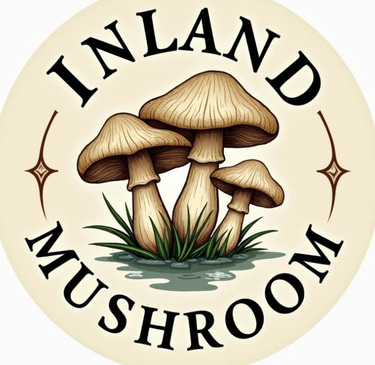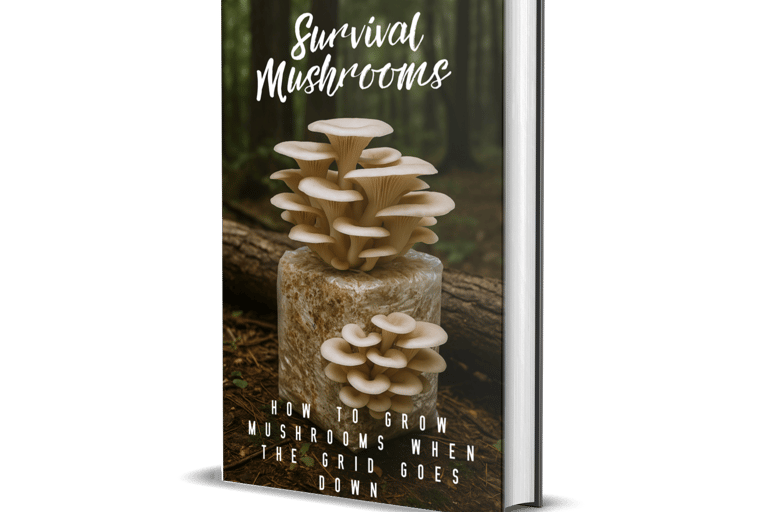How to Dehydrate Mushrooms with a Dehydrator (Easy Step-by-Step Guide)
Learn how to dehydrate mushrooms using a dehydrator. Step-by-step prep, temps, storage tips, and best dehydrators for long-term use.
GROWING
9/18/20254 min read
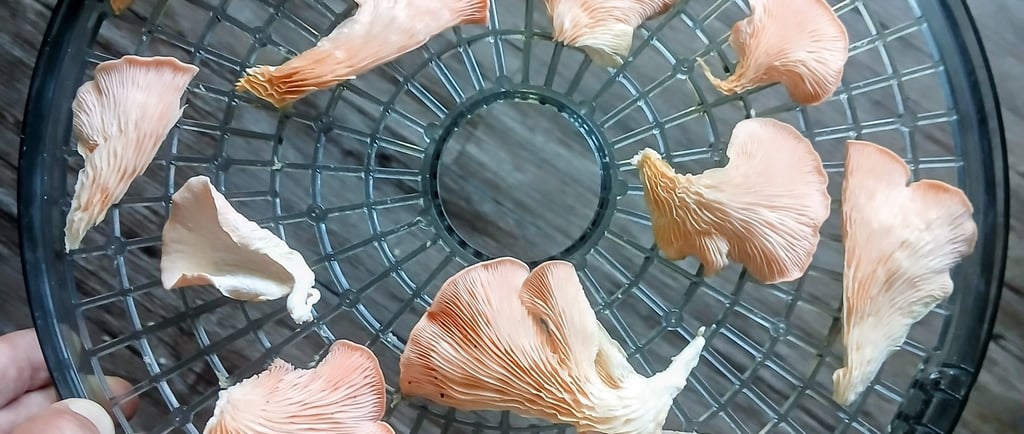

How to Dehydrate Mushrooms with a Dehydrator (Step-by-Step Guide)
Fresh mushrooms are amazing, but they don’t last long. Within just a few days they can soften, spoil, and lose flavor. When I first started growing, I didn’t even have a dehydrator — I’d balance a metal screen over an inline duct fan, blowing air upward with another screen on top to keep the mushrooms from flying away. It worked for a while, but it was slow and a total hassle.
Eventually, I picked up a cheap dehydrator, and it completely changed the game. It’s still the easiest and most reliable way to preserve mushrooms for months — even years — while keeping most of their flavor and nutrition.
Whether you’re growing your own or just stocking up from the store, here’s a simple step-by-step guide on how to dehydrate mushrooms the right way.
Why Dehydrate Mushrooms?
Long shelf life – store for 6–12 months or longer with vacuum sealing.
Save money – no wasted mushrooms going slimy in the fridge.
Convenient – ready to throw into soups, stir-fries, backpacking meals.
Prepping bonus – light, compact, and lasts without refrigeration.
Best Mushrooms to Dehydrate
Almost any edible mushroom can be dried, but some work better than others:
Oysters – easy, quick drying, great texture when rehydrated.
Shiitake – classic for soups and broths.
Button & Cremini – cheap and widely available.
Maitake / Hen of the Woods – adds rich flavor to dishes.
Step 1: Harvest & Prep
Harvest at the right stage – caps fully open but not soggy.
Clean gently – brush off dirt or wipe with a damp cloth. Avoid soaking in water, they’ll just absorb it.
Slice evenly – aim for about ¼ inch thickness. The more consistent, the more evenly they dry.
Pro tip: with oysters, you can simply tear them into strips by hand.
Step 2: Load the Dehydrator
Lay pieces in a single layer, no overlap.
Don’t cram the trays – airflow is key.
Rotate trays halfway through for even drying.
Save smaller stems – they dry faster and are great for soups.
Step 3: Temperature & Time
Set dehydrator to 110–120°F (43–49°C).
Small mushrooms/slices: 6–8 hours.
Oysters: 6–10 hours.
Shiitake or thicker slices: 8–12 hours.
How to test: pick up a piece and snap it. If it bends, it needs more time. If it snaps clean, it’s ready.
Step 4: Common Mistakes to Avoid
Common Problems When Dehydrating Mushrooms
Not drying long enough – leathery mushrooms will re-soften and mold in storage.
Stacking too thick – slows airflow and causes uneven drying.
Too hot – cooks mushrooms instead of drying them, changing the flavor.
Not checking regularly – mushrooms can overdry and crumble if left too long.
Larger mushrooms blocking the lid – big caps or thick stems can sometimes keep the dehydrator lid from closing all the way. It’s not a big deal — they’ll still dry fine — but if it’s happening often, you can slice them thinner or upgrade to a larger dehydrator later on.
Step 5: Storing Your Dried Mushrooms
Once crisp and fully dried:
Store in clean glass jars with tight lids.
Add a silica packet for extra insurance.
Label jars with the date and type of mushroom.
Keep in a cool, dark place.
Shelf life:
Mason jar: 6–12 months.
Vacuum sealed: 1–2+ years.
Freezer storage: optional for extra security.
Step 6: How to Use Later
Rehydrate: soak in warm water for 10–20 minutes.
Use the soak water: adds deep mushroom flavor to soups and sauces.
Grind into powder: makes an amazing seasoning for pasta, eggs, or meat.
Backpacking meals: lightweight and easy to pack.
Recommended Dehydrators
You don’t need a huge setup to start drying mushrooms. Here are a few options (affiliate links):
Beginner friendly: Elite Gourmet – affordable, easy to use.
Mid-tier: Presto Dehydrator – solid build, adjustable thermostat.
Heavy use: Excalibur Dehydrator – more expensive, but built for serious growers.
Disclosure: This post may contain affiliate links. As an Amazon Associate I earn from qualifying purchases. If you click and buy through these links, I may earn a small commission at no extra cost to you. I only recommend products I personally use or trust.
Final Thoughts
Dehydrating mushrooms with a dehydrator is the easiest way to preserve your harvest and enjoy mushrooms all year. It only takes a few hours of drying and some jars for storage.
💡 No power? No problem. If you ever need to dry mushrooms off-grid or during a power outage, check out my guide on how to dry mushrooms without electricity.
Looking for a deeper dive? I put together a complete SHTF Mushroom Growing Guide that shows how to grow with minimal gear, plus the tools I recommend. See the guide here

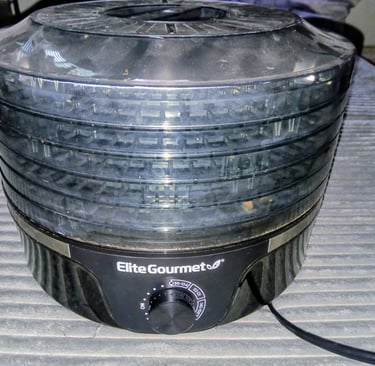
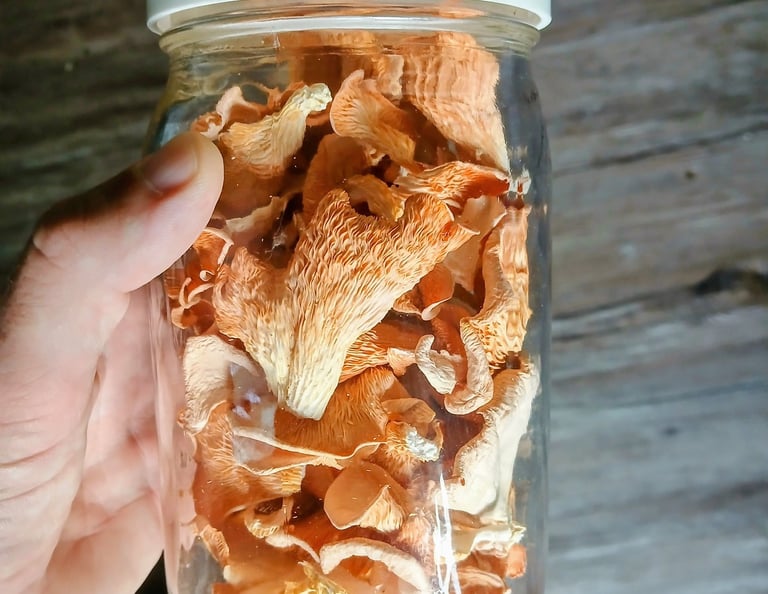

Cultivation
Helping you master gourmet mushroom cultivation — on or off the grid.
© 2024. All rights reserved.
